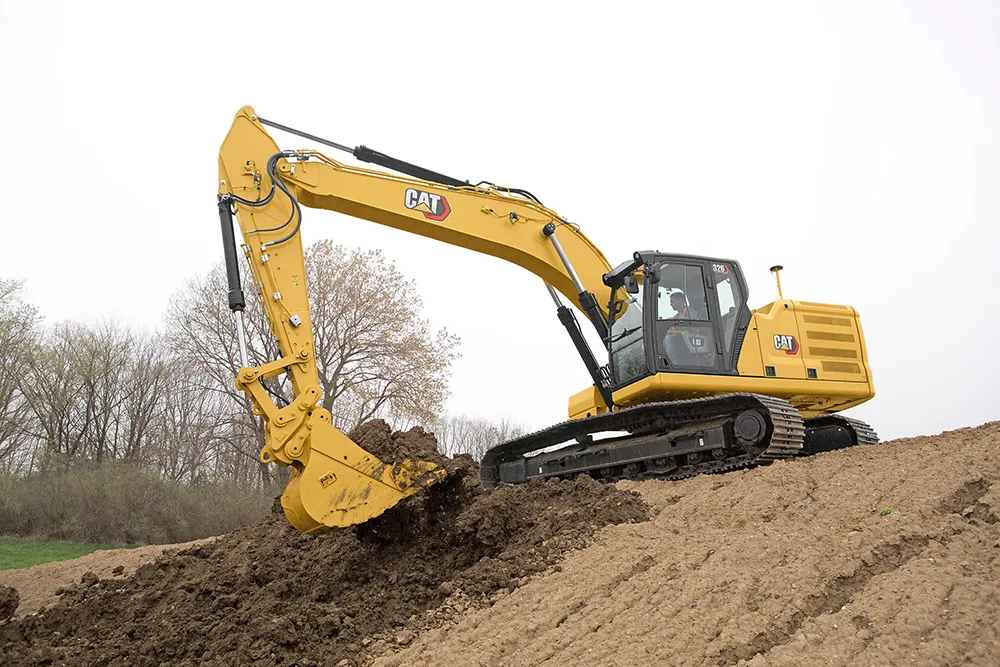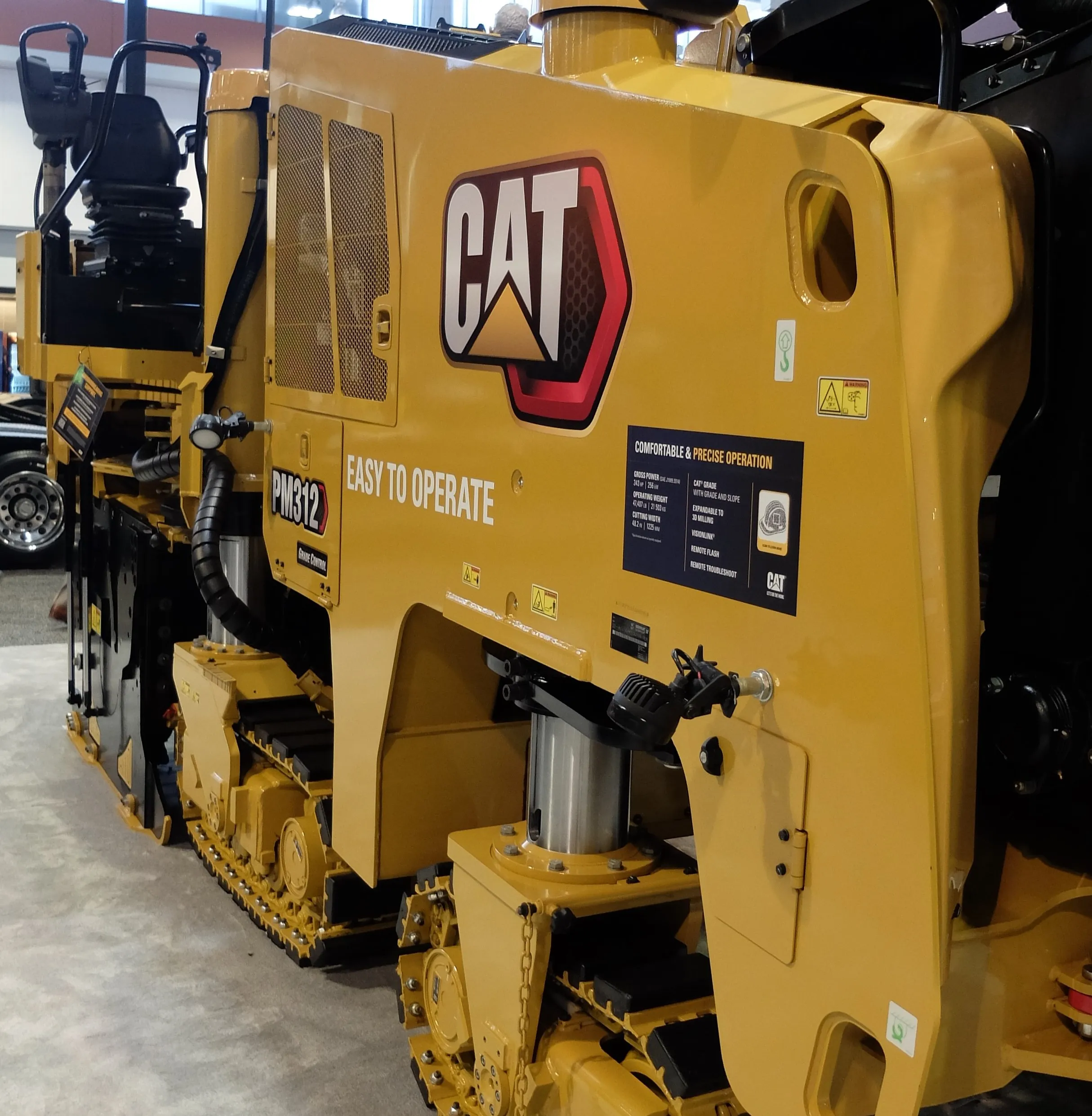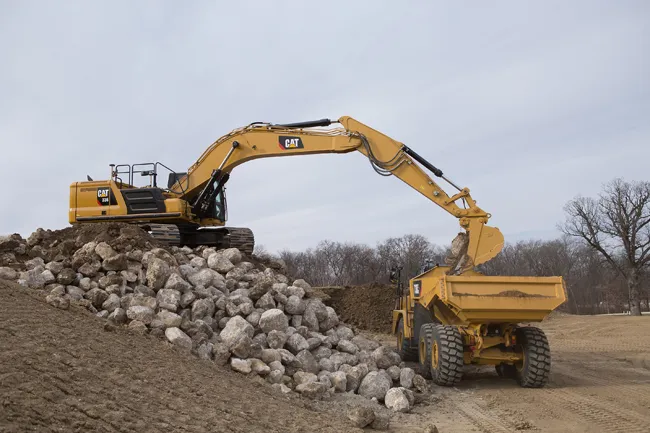The new 16M3 motor grader from Caterpillar is an essential machine for building and maintaining mine haulage roads.
The grader has a 4.9m moldboard and an average operating weight of 32,411kg, making it a perfect size for operations using 136tonne or smaller trucks.
The 16M3 features a Cat C13 ACERT engine with the Cat Optimised Variable-Horsepower system, which provides net power ratings from 216-259kW.
October 16, 2015
Read time: 2 mins
The new 16M3 motor grader from 178 Caterpillar is an essential machine for building and maintaining mine haulage roads.
The grader has a 4.9m moldboard and an average operating weight of 32,411kg, making it a perfect size for operations using 136tonne or smaller trucks.
The 16M3 features a Cat C13 ACERT engine with the Cat Optimised Variable-Horsepower system, which provides net power ratings from 216-259kW.
The engine also is available in three configurations to satisfy global emissions standards: US EPA Tier 4 Final/EU Stage IV/Japan 2014 (Tier 4 Final); Tier 3/Stage IIIA /Japan 2006 (Tier 3) equivalent; and Tier 2/Stage II/Japan 2001 (Tier 2) equivalent.
A new ECO mode, standard for Tier 2 equivalent and Tier 4 engines, is designed to improve fuel economy by optimising engine speed to 1,900rpm in working gears when possible with no compromise in performance. This operator-selected feature delivers fuel savings estimated at up to 4-5% compared with working in comparable light- to moderate-load applications with the system deactivated.
An additional engine control system feature provides consistent power to the ground by continually adjusting the engine to compensate for power losses to the cooling fan.
Also new for the 16M3 is the “OK-to-Start” system, which automatically checks the engine coolant, engine oil and hydraulic oil levels when the key is turned to the on position. The system also monitors these levels and the trans-axle oil level during operation, and it alerts the operator if levels drop too low.
In the cab, a new full-colour touch-screen display allows the operator to monitor machine performance, set parameters to suit operating situations and access service information for initial troubleshooting. The display also shows Cat Grade Control Cross Slope readings and DEF (diesel exhaust fluid) level.
Also standard for the 16M3 is the Caterpillar Vital Information Management System that provides real-time information about machine health and surroundings, trends, events and other vital machine information to support production and planning.
The grader has a 4.9m moldboard and an average operating weight of 32,411kg, making it a perfect size for operations using 136tonne or smaller trucks.
The 16M3 features a Cat C13 ACERT engine with the Cat Optimised Variable-Horsepower system, which provides net power ratings from 216-259kW.
The engine also is available in three configurations to satisfy global emissions standards: US EPA Tier 4 Final/EU Stage IV/Japan 2014 (Tier 4 Final); Tier 3/Stage IIIA /Japan 2006 (Tier 3) equivalent; and Tier 2/Stage II/Japan 2001 (Tier 2) equivalent.
A new ECO mode, standard for Tier 2 equivalent and Tier 4 engines, is designed to improve fuel economy by optimising engine speed to 1,900rpm in working gears when possible with no compromise in performance. This operator-selected feature delivers fuel savings estimated at up to 4-5% compared with working in comparable light- to moderate-load applications with the system deactivated.
An additional engine control system feature provides consistent power to the ground by continually adjusting the engine to compensate for power losses to the cooling fan.
Also new for the 16M3 is the “OK-to-Start” system, which automatically checks the engine coolant, engine oil and hydraulic oil levels when the key is turned to the on position. The system also monitors these levels and the trans-axle oil level during operation, and it alerts the operator if levels drop too low.
In the cab, a new full-colour touch-screen display allows the operator to monitor machine performance, set parameters to suit operating situations and access service information for initial troubleshooting. The display also shows Cat Grade Control Cross Slope readings and DEF (diesel exhaust fluid) level.
Also standard for the 16M3 is the Caterpillar Vital Information Management System that provides real-time information about machine health and surroundings, trends, events and other vital machine information to support production and planning.








